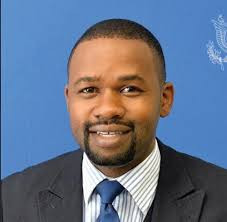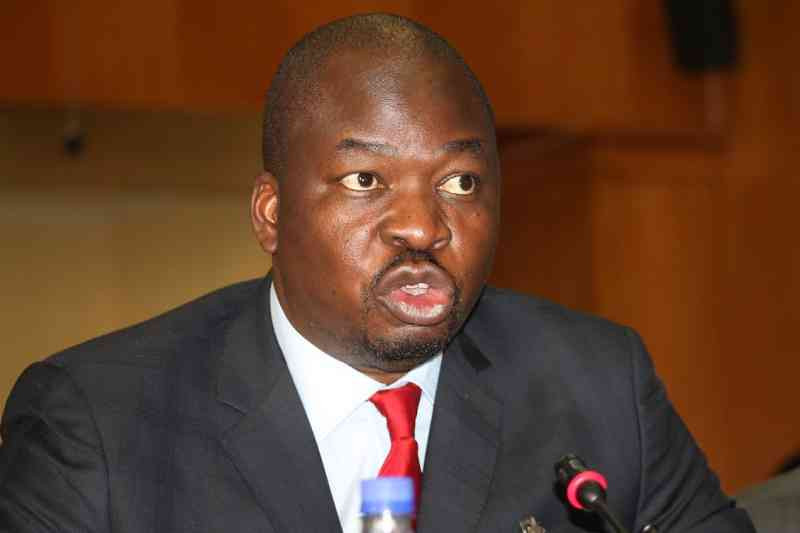
If there is one thing that Zimbabwean media stakeholders — state and non-state actors — unanimously agree upon, is the imperative need to close ranks and co-create survival strategies of a sector gasping for breath and in need of reinvention.
And none other than Information, Publicity and Broadcasting Services minister Jenfan Muswere, the man granted with the executive powers to spearhead the media development agenda could have better described the uphill task that lies ahead.
Officiating at the annual convening of Zimbabwean media stakeholders, the flagship gathering of media leaders organised by the Media Alliance of Zimbabwe (MAZ) — Muswere said that an underperforming media sector reflects badly on his stewardship.
"I have an open-door policy," he said.
"Any media organisation that is struggling for survival should pay the ministry a visit and we can assess how we can assist each other."
"The closure of any media organisation will reflect badly on my tenure as minister, hence my availing myself to assist in whichever way possible.”
This open invitation, which I believe should be taken up in the spirit of not only tracking government promises but also maintaining momentum on media sustainability policy dialogues — should galvanise media stakeholders towards rescuing journalism out of this period of distress.
The baseline for engagement, beyond the minister's pronouncements of an open door policy — should be premised on the government's media blueprint.
- AMH journalists arrested
- AMH journalists arrested
- Key considerations for the future of radio broadcasting in Zim
- Key considerations for the future of radio broadcasting in Zim
Keep Reading
Launched at the presidential level, the Zimbabwe media policy presents an opportunity for media stakeholders to have a basis of engagement and a reference point on what needs to be done to inject life into the sector.
While there have been wide ranging criticism of this policy in so far as methodology and substance is concerned, there are some positive nuggets that should be given an impetus for implementation.
The beauty of a policy is that it is soft law and to that extent it is not static and doesn't require long bureaucratic processes to review.
Besides Zimbabwe is gravitating towards a new public administration approach that doesn't place emphasis on the authority of hierarchy, but the supremacy of results and deliverables.
It was within this context that media stakeholders, inclusive of government, legislators, independent commissions, the police, media executives, editors, advertisers, media support organizations, development partners and journalists convened to validate the media policy as part of the stakeholders conference deliberations.
Drawing from three of the strategic pillars of the media policy, the conference concluded with some critical takeaways that could potentially be some low hanging fruits in harvesting results of the policy.
In drawing some areas for implementation of the media policy, stakeholders were cognizant of the challenges of non implementation of policies that have characterised the Zimbabwean landscape.
Zimbabwe has several progressive laws and policies that gather dust without being given effect.
The Information and Media Panel of Inquiry (IMPI) was one such investment by the government whose recommendations, some of which remain relevant but were not fully implemented.
In the case of the media policy, for this submission, at least five steps towards implementing the policy can be considered.
* Setting up of the Multi-stakeholders implementation committee
As part of the implementation matrix of the media blueprint, the policy provides for the establishment of a multi-stakeholders committee that will oversee the implementation of the policy.
This committee, which according to the policy would be responsible for monitoring and evaluation in tracking the progress of implementation, would be the critical arm in driving the policy.
Other sub thematic teams in specialised areas and composed of varying stakeholders, some of whom are named within the policy would be working to support this implementation committee.
The committee will lead and coordinate the ministry's efforts in implementing the policy, such that operationalising the policy is systematic and not haphazard.
Resources for engagement should be allocated from the broader work of the ministry and the committee and its work thereof made public for a sustained people cantered implementation framework for the media policy.
* Publication of the Media Practitioners Bill
In pursuit of the principle of co-regulation, adopted at Cabinet level and envisaged in the Media Policy, there's an opportunity to upscale the dialogue of enforcing professional standards and ensuring quality media content through the implementation of media co-regulation.
Co-regulation should be anchored on at least three principles.
The first being the concept of delegation of the regulatory powers of the Zimbabwe Media Commission (ZMC).
Whatever form the co-regulation framework is going to emerge as, the powers to regulate news media and journalism as is currently obtained within the constitution must be vested within the industry.
Secondly, the debate on regulating content creation and more broadly social media, should be separated from that of enforcing professional journalistic standards.
If at all there's a need to enforce standards on content creation, influencing or blogging, such regulation - in my view - should happen outside the purview of the law.
Unlike journalism whose standards are established and traceable, the yardstick of enforcing standards among influencers and content creators is tantamount to set standards for WhatsApp groups.
Third, the self-regulatory mechanism doesn't necessarily need to be institutional and can be designed in a manner that recognizes the existing mechanisms of holding media accountable.
* Consolidated Fund
The media law reform dialogues must be sustained with a different focus of building a consolidated fund for the media.
While the more structural debate is how media regulation in Zimbabwe is fragmented, one way to address this uncoordinated approach is to have one consolidated fund for the sector.
This consolidated fund can be revolving and used to support private media enterprises and to provide stimulus packages for the media sector.
The media tax band needs to be widened, thereby making it affordable to enhance compliance. These funds can also be managed independently.
*Nigel Nyamutumbu is a media development practitioner serving as the coordinator of a network of journalistic professional associations and media support organizations the Media Alliance of Zimbabwe (MAZ). He can be contacted on [email protected] or +263 772 501 557
* Read the full article on www.thestandard.co.zw










